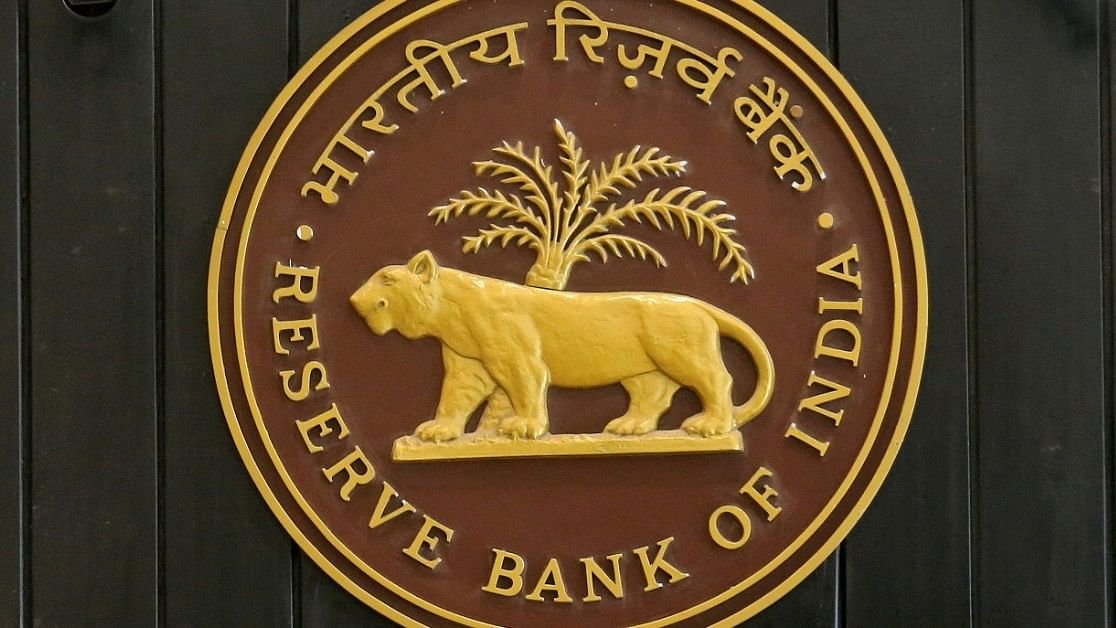
RBI logo.
Credits: Reuters Photo
New Delhi: India's banking sector is all set to witness another good year and the total profit of public sector banks is set to touch Rs 1.50 lakh crore amid higher credit demand driven by a strong economic growth.
During the first six months of the current financial year, public sector banks earned about Rs 68,500 crore and the trajectory is likely to continue unchanged in the second half as well.
Going by the present trend, public sector banks are expected to earn a net profit of around Rs 1.50 lakh crore in FY2024 up from Rs 1.04 lakh crore recorded in FY2023.
Stability on the non-performing assets (NPAs) side, robust credit demand and high interest rate regime are expected to help the profitability of the banks in the coming months.
"The underlying economy has shown a lot of strength. Ultimately, banking does well when the economy does well. RBI recently revised India's growth projection from 6.5 per cent to 7 per cent," Kotak Mahindra Bank Whole Time Director Shanti Ekambaram told PTI.
Growth seems to be robust. Credit demand started some 18 months ago with retail segment and it is now moving to capex, she added.
On the flip side, she said that deposit growth has been slower than credit growth and that's the challenge that the banks have to address in the coming months.
Although there is some increase in the deposit growth, there is still a significant gap of about 500 basis points when compared to loan growth.
Aggregate deposits with banks increased 12.2 per cent during the 2023 April-November period as against 9.3 per cent a year ago.
Credit growth moderated to 16.4 per cent as on December 1, 2023 from 17.5 per cent a year ago, as per the latest RBI Bulletin.
Slower deposit mobilisation would result in a decline in Current Account and Savings Account (CASA) limiting room for rate reduction.
As indicated by Reserve Bank of India (RBI) Governor Shaktikanta Das in October, interest rate would remain high for some time.
RBI is unlikely to cut policy rate at least for next six months, as per analysts.
The demand for housing, car, education and personal loans would continue to witness a double-digit growth. However, there is a moderation in credit demand from the rural segment which is reflected in the decline in two wheeler and tractor sales.
Even the Net Interest Margin (NIM) is expected to remain at over 3 per cent for most of the banks due to the elevated level of interest rate.
A key positive factor for the banking sector is the decline in Non Performing Assets (NPAs) to a comfortable level and fresh slippages are also under control. It provides banks room to expand their balance sheets with focus on capital.
NPAs declined as a result of the government's 4Rs strategy of Recognition, Resolution, Recapitalisation and Reforms, analysts said.
According to RBI data, Gross NPAs or GNPAs of the Scheduled Commercial Banks (SCBs) have declined in the last three years.
It declined from Rs 8,35,051 crore (GNPA ratio of 7.33 per cent) as on March 31, 2021 to Rs 7,42,397 crore (GNPA ratio of 5.82 per cent) as on March 31, 2022. Further, the amount dropped to Rs 5,71,544 crore (GNPA ratio of 3.87 per cent) as on March 31, 2023.
Similarly, these banks' GNPAs pertaining to corporates declined from Rs 5,15,150 crore as on March 31, 2021 to Rs 4,33,749 crore as on March 31, 2022. It stood at Rs 2,75,298 crore as on March 31, 2023.
The robust performance of the banks in the first half of the current fiscal has been ably supported by a well-capitalised banking system that witnessed an upswing in credit disbursement to the retail, industry and services segments, according to the analysts.
A major development in the banking sector this year was Uday Kotak's decision to step down as the MD and CEO of Kotak Mahindra Bank after steering the lender for almost two decades since its incorporation.
His successor Ashok Vaswani will assume charge next year.
While the financials of the banking system improved, there were instances of fraud. UCO Bank and Bank of Baroda witnessed cyber frauds.
Against this backdrop, the finance ministry held a meeting in November with all stakeholders to discuss issues related to cyber security in the financial services sector and increasing incidents of recent online financial frauds.
The meeting took stock of the preparedness of the banks and other financial institutions in tackling the challenges arising from cyber security in the financial services sector and the need for a focused approach to mitigate cyber attacks and frauds.